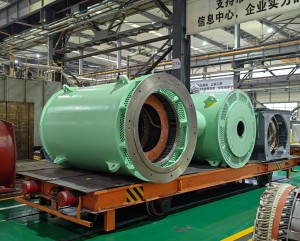The vibration performance of a three-phase asynchronous motor is a critical factor in its overall reliability and efficiency. Even slight variations in manufacturing processes can significantly influence the motor‘s vibration characteristics. This paper will delve into the key manufacturing factors that can impact the vibration performance of t-ese motors.
Factors Affecting Vibration Performance
Rotor Balancing:
Static imbalance: This occurs when the center of mass of the rotor does not coincide with its geometric center. It can lead to excessive radial forces and vibrations.
Dynamic imbalance: This arises when the mass distribution around the rotor axis is uneven. It causes both radial and axial vibrations, often at higher frequencies.
Balancing techniques: Proper balancing during manufacturing is crucial to minimize these imbalances. Techniques like static and dynamic balancing are commonly used.
Manufacturing Tolerances:
Dimensional tolerances: Deviations from the specified dimensions of components like the stator and rotor can lead to misalignments and increased vibration.
Machining quality: The quality of machining operations, such as turning, milling, and grinding, directly affects the surface finish and dimensional accuracy of the components. Rough surfaces or burrs can introduce additional vibration sources.
Material Quality:
Mechanical properties: The mechanical properties of materials used for the rotor and stator, such as stiffness and damping, influence the motor’s vibration response.
Inclusions and defects: Internal defects in the materials, like voids or inclusions, can weaken the structure and contribute to vibrations.
Assembly Quality:
Alignment: Proper alignment of the stator and rotor is essential to minimize vibration. Misalignment can cause increased bearing loads and vibrations.
Tightening torque: The torque applied to bolts and screws during assembly must be controlled to prevent stress concentrations and vibrations.
Heat Treatment:
Residual stresses: Improper heat treatment can introduce residual stresses in the motor components, leading to distortions and vibrations.
Micro structure: The micro structure of the materials, affected by heat treatment, can influence the mechanical properties and vibration behavior
Bearing Quality and Installation:
Bearing defects: Defects in electric motor bearings, such as pitting or brinelling, can cause increased noise and vibration.
Installation: Proper installation of bearings, including correct preload and alignment, is crucial to minimize vibration.
Post time: Jan-21-2025


